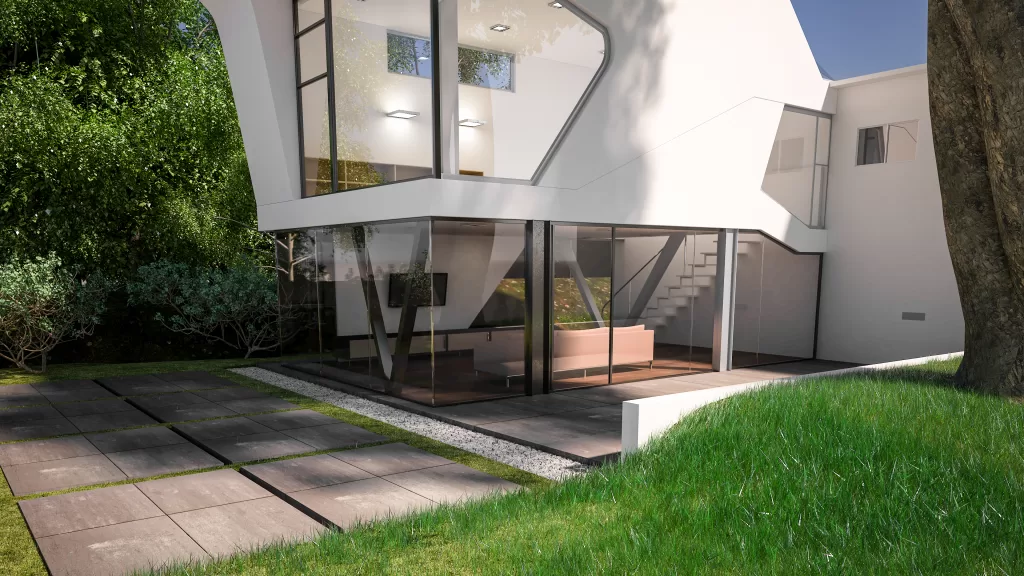Sustainability is no longer a phrase; it is a requirement. As the demand for eco-friendly projects grows, architects and engineers are looking for new ways to reduce the environmental impact of buildings. Green concrete is one example of a solution that is revolutionizing the construction business. Green concrete, often known as sustainable or eco-friendly concrete, is an exceptional material that is influencing the future of sustainable construction. Unlike ordinary concrete, which contributes significantly to carbon emissions, green concrete is deliberately intended to have a lower carbon footprint. It uses recycled resources, such as industrial leftovers or trash, in its manufacturing, decreasing the demand for new materials.
However, the benefits of green concrete do not end there. This environmentally friendly option is also extremely durable and energy efficient, making it an excellent choice for green buildings. Green concrete is changing the way buildings are built by lowering the demand for natural resources and minimizing construction waste. In this essay, we will look at how green concrete is transforming the building sector and influencing the future of sustainable architecture. Join us as we discuss the essential features, benefits, and enormous potential of this game-changing substance.

Green concrete is rapidly gaining popularity as an eco-friendly and sustainable building material that could revolutionize the construction industry. Made from recycled materials such as fly ash, slag, and other industrial byproducts, green concrete offers several advantages over traditional concrete, including reduced carbon emissions, lower energy consumption, and improved durability.
One of the primary benefits of green concrete is its lower carbon footprint. Traditional concrete production accounts for a significant percentage of global carbon emissions, making it a major contributor to climate change. In contrast, green concrete production significantly reduces carbon emissions by using recycled materials and by requiring less energy during production. Another advantage of green concrete is its durability. Traditional concrete structures are prone to cracking and damage over time, which can lead to expensive repairs and replacements.
Why Sustainability is Important for the Construction Industry
It’s interesting to note that the construction industry is one of the most environmentally destructive industries in the world. The manufacture of traditional concrete, for instance, releases large amounts of CO2 into the atmosphere. Furthermore, traditional concrete often ends up in landfills where it takes thousands of years to decompose. That being said, green concrete is a more sustainable option that is gaining popularity. Green concrete is made with materials that are environmentally friendly and can be recycled or reused. When green concrete is used in construction projects, it helps to reduce the amount of CO2 that is released into the atmosphere.
Moreover, green concrete can aid in resource conservation. Fly ash and slag cement, for instance, are made with materials that would otherwise be discarded. Additionally, green concrete is more durable than traditional concrete, which means that fewer resources will be required to replace it over time. The construction industry is beginning to recognize the significance of sustainability, and green concrete is expected to play a crucial role in its future. By incorporating green concrete into their projects, construction companies can lessen their environmental impact while also saving money in the long term.
What Does the Future Hold?
The construction industry is experiencing a transformation, and green concrete is a significant part of that revolution. As sustainability awareness grows, more and more construction companies are beginning to use green concrete for their projects. The future looks bright for the industry as green concrete becomes increasingly popular every day, and as technology advances, it is sure to play an even more prominent role in the industry.
So, what does the future hold for the construction industry? It’s difficult to predict with certainty, but one thing is certain: discovering innovative ways to make construction projects more sustainable will be a top priority. Green concrete is an excellent approach to achieving this, and it is expected to play a significant role in the years ahead.
